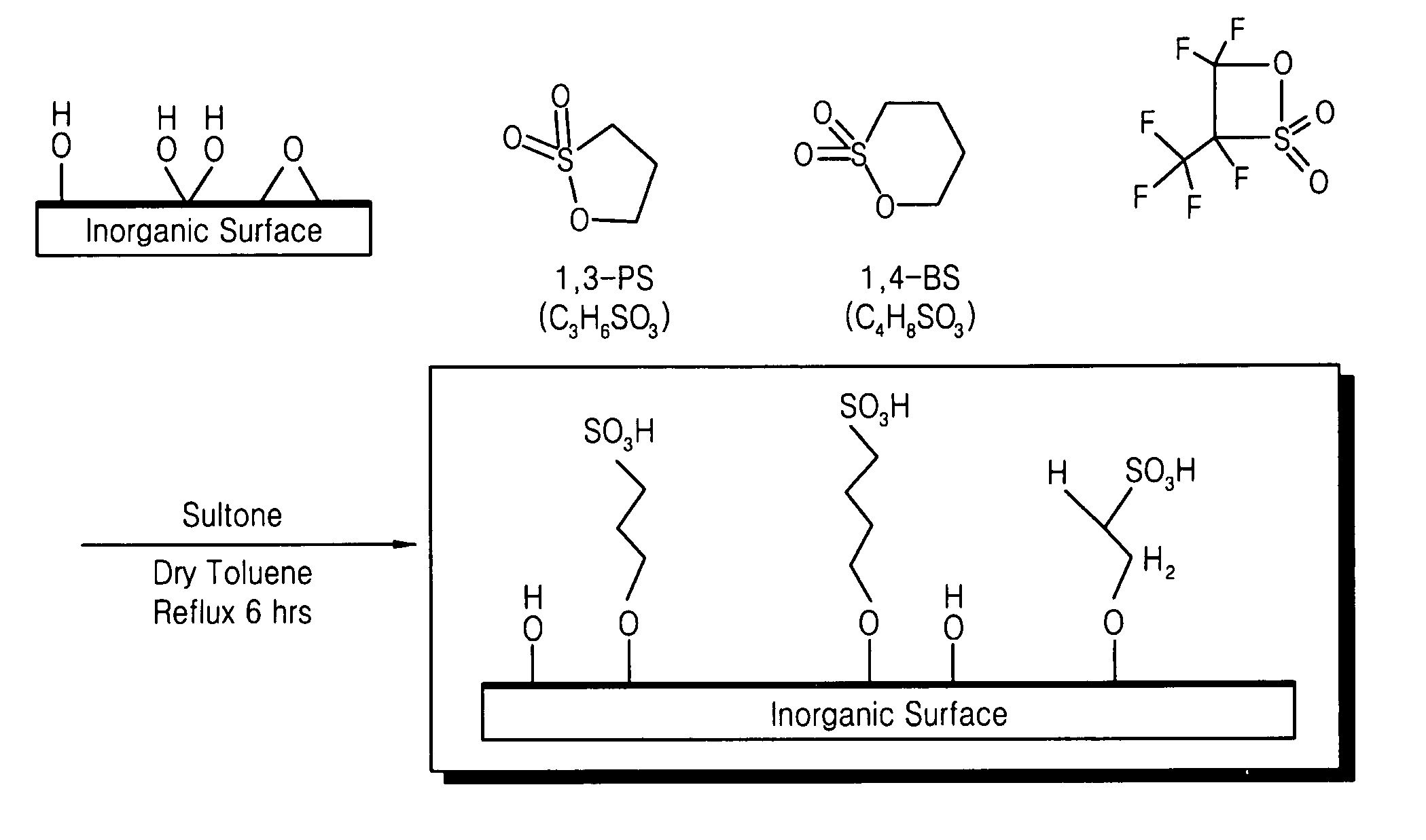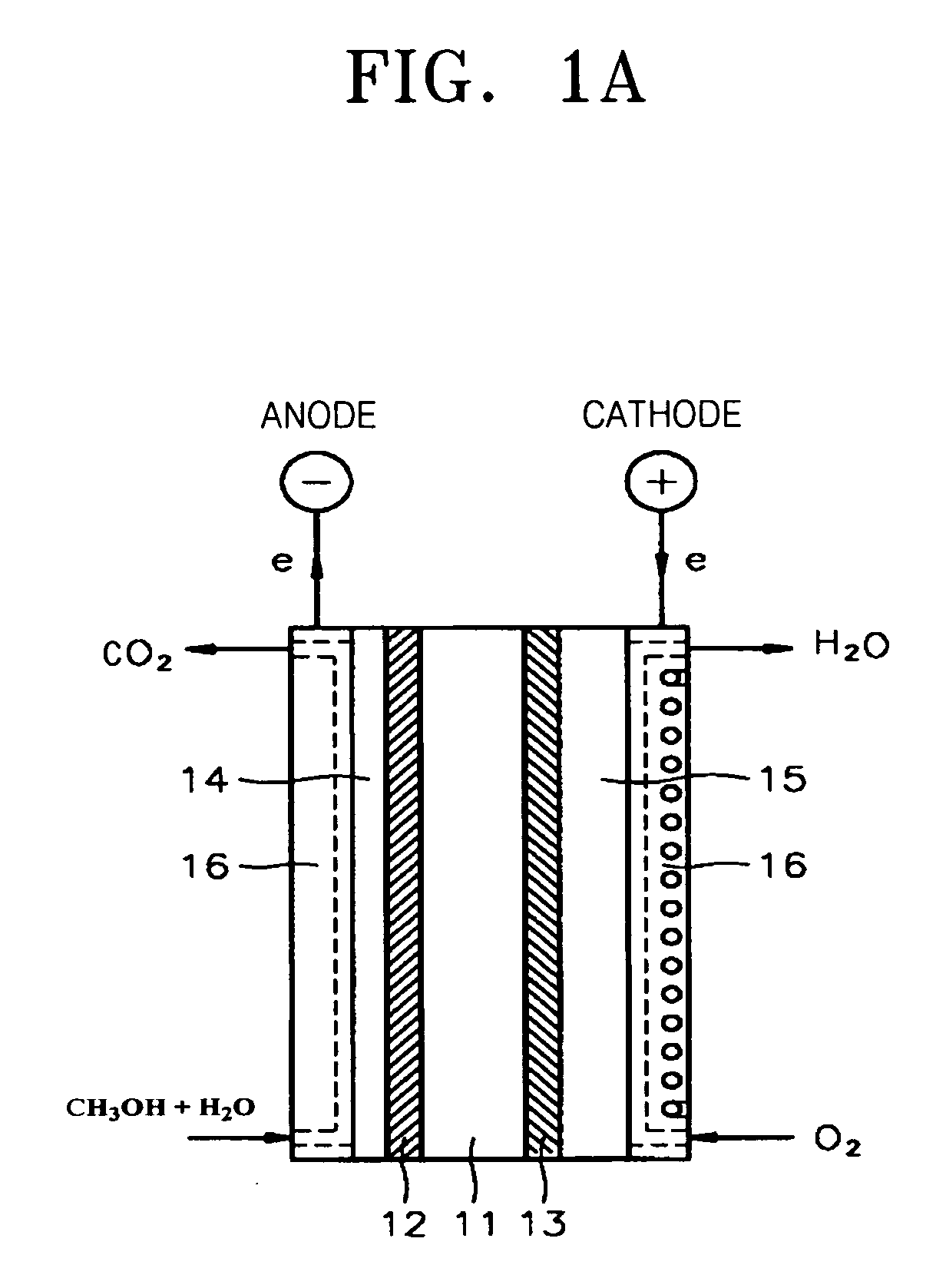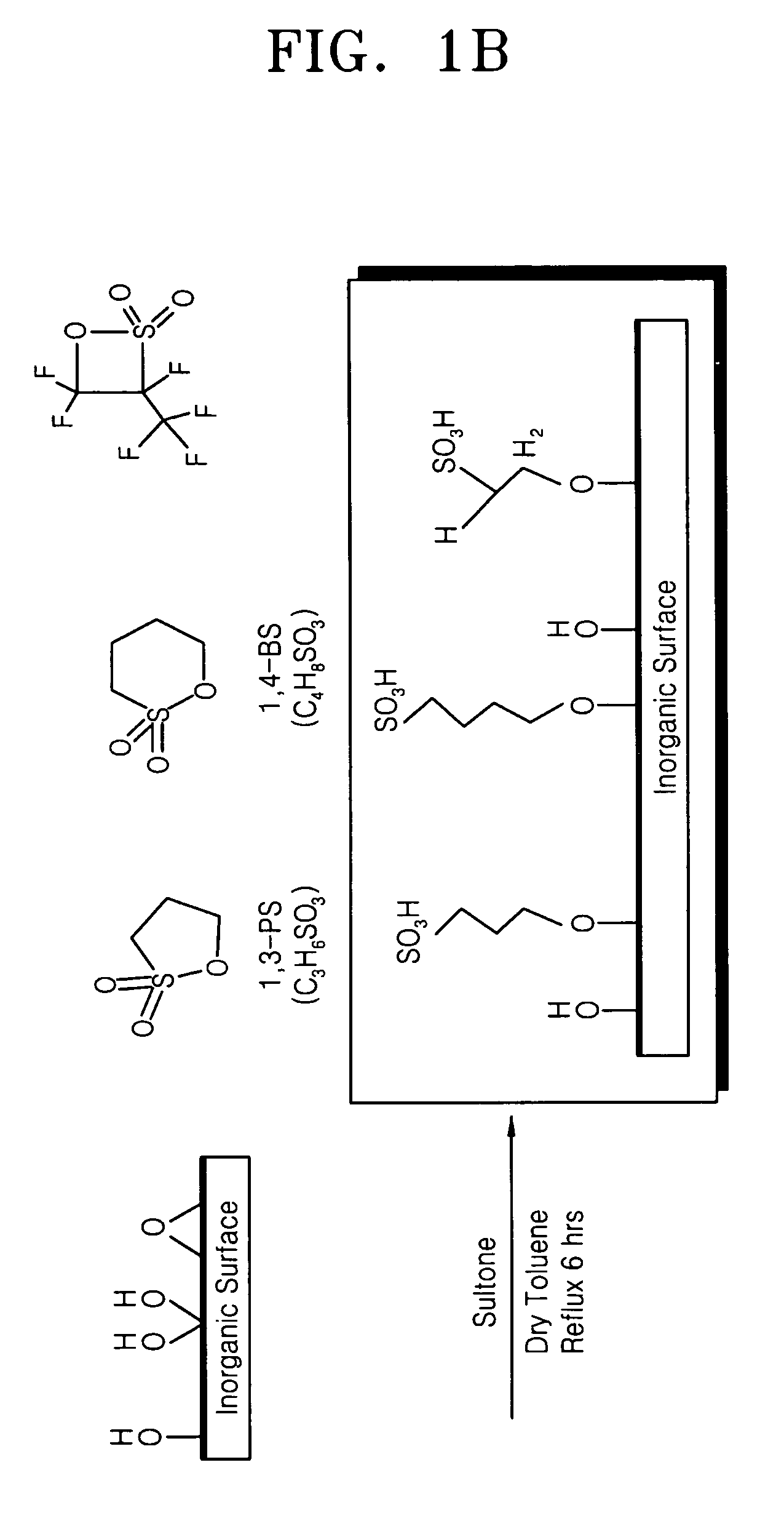Proton conducting inorganic material, polymer nano-composite membrane including the same, and fuel cell adopting the polymer nano-composite membrane
- Summary
- Abstract
- Description
- Claims
- Application Information
AI Technical Summary
Benefits of technology
Problems solved by technology
Method used
Image
Examples
example 1
Addition of 1,3-PS
[0090] First, a process of imparting proton conductivity in montmorillonite, an inorganic material having a nano-sized interlayer distance, was carried out as follows.
[0091] 20 g of montmorillonite was added to 500 mL of a 1N sulfuric acid solution to undergo a reaction at 60° C. for 4 hours. After the reaction, the reaction product was sufficiently washed with water to obtain pretreated montmorillonite.
[0092] 1300 mmol of toluene was placed in a 500-mL round bottom flask, and the flask was purged with nitrogen (N2). Subsequently, 60 mmol (6.12 g) of the pretreated montmorillonite was added to the flask while stirring to obtain a pretreated montmorillonite reaction mixture.
[0093] Then, 30 mmol (3.66 g) of 1,3-propane sultone was added to the pretreated montmorillonite reaction mixture. The result was mixed at 110° C. for 24 hours, then cooled, filtered, washed with toluene, and dried at ambient temperature to produce a proton conducting inorganic material with ...
example 2
Addition of 1,4-BS
[0094] A proton conducting inorganic material with a layered structure was produced in the same manner as in Example 1, except that 30 mmol (4.08 g) of 1,4-butane sultone was added to the pretreated montmorillonite reaction mixture instead of 30 mmol of 1,3-propane sultone.
example 3
Addition of Fluorinated Sultone
[0095] 32 mL of toluene was added to a 100-mL round bottom flask, and the flask was purged with nitrogen (N2). Subsequently, 20 mmol (2.04 g) of pretreated montmorillonite obtained in the same manner as in Example 1 was added to the flask while stirring to obtain a pretreated montmorillonite reaction mixture.
[0096] Then, 30 mmol (2.42 g) of a (1,2,2-trifluoro-2-hydroxy-1-trifluoromethylene)ethanesulfonic acid sultone compound was added to the pretreated montmorillonite reaction mixture. The result was mixed at 110° C. for 24 hours, then cooled, filtered, washed with toluene, and dried at ambient temperature to produce a proton conducting inorganic material with a layered structure.
PUM
| Property | Measurement | Unit |
|---|---|---|
| Temperature | aaaaa | aaaaa |
| Percent by mass | aaaaa | aaaaa |
| Percent by mass | aaaaa | aaaaa |
Abstract
Description
Claims
Application Information
 Login to View More
Login to View More - R&D Engineer
- R&D Manager
- IP Professional
- Industry Leading Data Capabilities
- Powerful AI technology
- Patent DNA Extraction
Browse by: Latest US Patents, China's latest patents, Technical Efficacy Thesaurus, Application Domain, Technology Topic, Popular Technical Reports.
© 2024 PatSnap. All rights reserved.Legal|Privacy policy|Modern Slavery Act Transparency Statement|Sitemap|About US| Contact US: help@patsnap.com










